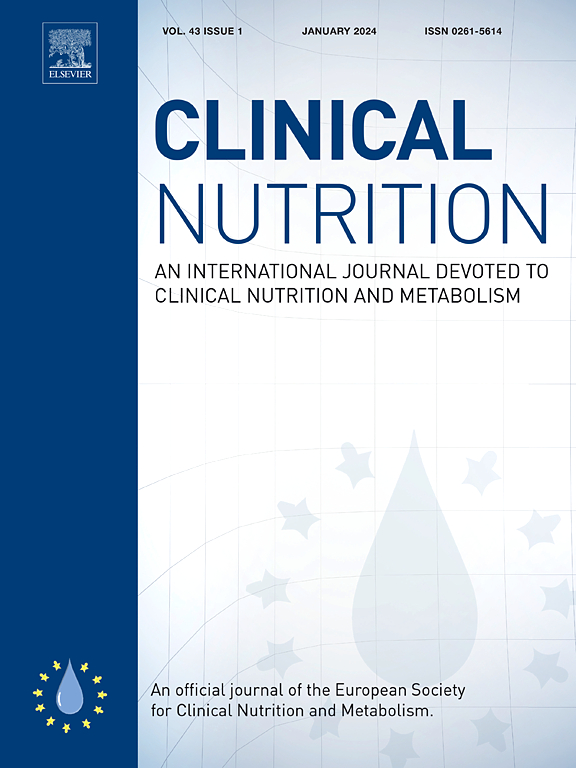The impact of high versus standard enteral protein provision on functional recovery following intensive care admission: A pre-planned Bayesian analysis of the PRECISe trial
IF 6.6
2区 医学
Q1 NUTRITION & DIETETICS
引用次数: 0
Abstract
Background and aims
High protein nutrition may improve outcomes after critical illness. We recently published the primary frequentist analysis of the PRECISe trial, showing that high (2.0 g/kg/day) compared with standard (1.3 g/kg/day) protein provision led to statistically significant worse health-related quality of life. The study, however, was not powered to draw definitive conclusions about clinical and other functional outcomes under a frequentist framework. We present a pre-planned and pre-specified Bayesian analysis to facilitate the clinical interpretation of these paramount endpoints.
Methods
The trial enrolled 935 patients and used the EQ-5D-5L health utility score as the primary endpoint. We performed Bayesian analyses of the primary and selected secondary endpoints, and relevant subgroups, under weakly informative priors. Sensitivity analyses were performed using skeptical and enthusiastic priors, and informed priors (when available) based on existing literature. Thresholds for clinically relevant differences were predefined.
Results
The posterior probability of benefit from high (2.0 g/kg/day) protein targets with respect to the EQ-5D-5L health utility score was 0 %. Concerning 60-day mortality, the posterior probability of any benefit from high protein provision was 8 %, with a posterior probability of clinically important harm (>5 % absolute risk difference) of 47 %, which varied between 1 and 21 % across various sensitivity analyses under reference or literature-based priors.
Conclusions
This pre-planned Bayesian re-analysis of the PRECISe trial shows that high (2.0 g/kg/day) compared to standard (1.3 g/kg/day) protein provision in critically ill patients has a low probability to yield any benefit and results in a high probability of an increase of 60-day mortality.
Registration number of clinical trial
NCT04633421.
求助全文
约1分钟内获得全文
求助全文
来源期刊

Clinical nutrition
医学-营养学
CiteScore
14.10
自引率
6.30%
发文量
356
审稿时长
28 days
期刊介绍:
Clinical Nutrition, the official journal of ESPEN, The European Society for Clinical Nutrition and Metabolism, is an international journal providing essential scientific information on nutritional and metabolic care and the relationship between nutrition and disease both in the setting of basic science and clinical practice. Published bi-monthly, each issue combines original articles and reviews providing an invaluable reference for any specialist concerned with these fields.
 求助内容:
求助内容: 应助结果提醒方式:
应助结果提醒方式:


